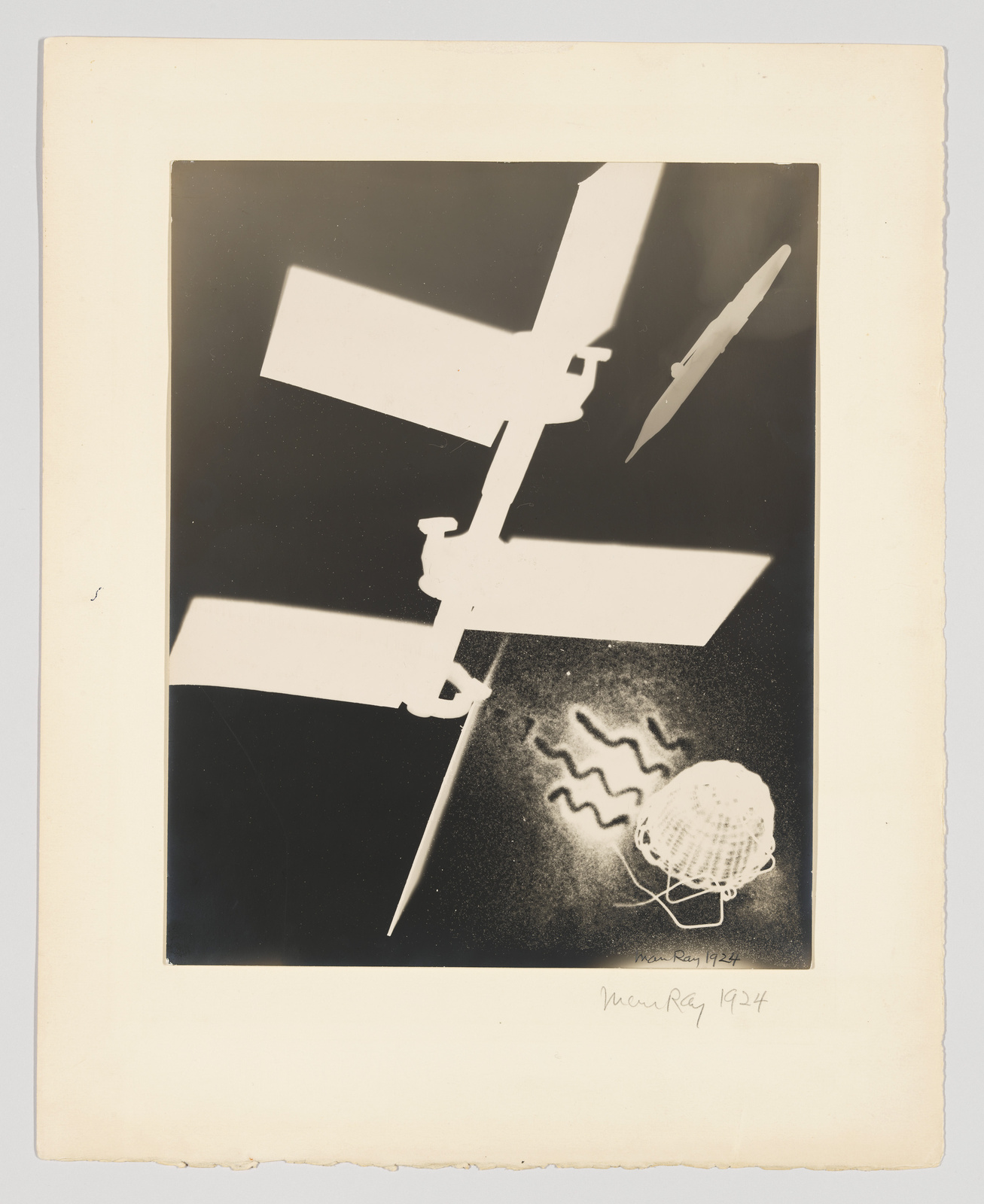In Paris in the 1920s, Man Ray supported himself as a commercial photographer—a vocation that led to his accidental rediscovery of a nineteenth-century process known as the photogram, in which a sheet of photosensitized paper is covered with objects and then exposed to light. While traditional photographs record the world roughly as the camera lens sees it, photograms are constructed without a camera, through a process of negation: the image arises from the absence of light in the spaces covered by the objects or from partial light in areas with cast shadows. Suspended between abstraction and representation, the results are sometimes quite sharp and hard-edged—as in this image—and at other times shadowy and indistinct. Man Ray called his photograms “rayographs,” a designation that referred both to rays of light and to his surname.
Not on view
Date
1924
Classification
Photographs
Medium
Gelatin silver print
Dimensions
Image: 11 5/8 × 9 5/16in. (29.5 × 23.7 cm)
Accession number
97.140.2
Edition
Unique
Credit line
Whitney Museum of American Art, New York; gift of John Steffens
Rights and reproductions
© Man Ray Trust / Artists Rights Society (ARS), NY / ADAGP, Paris

